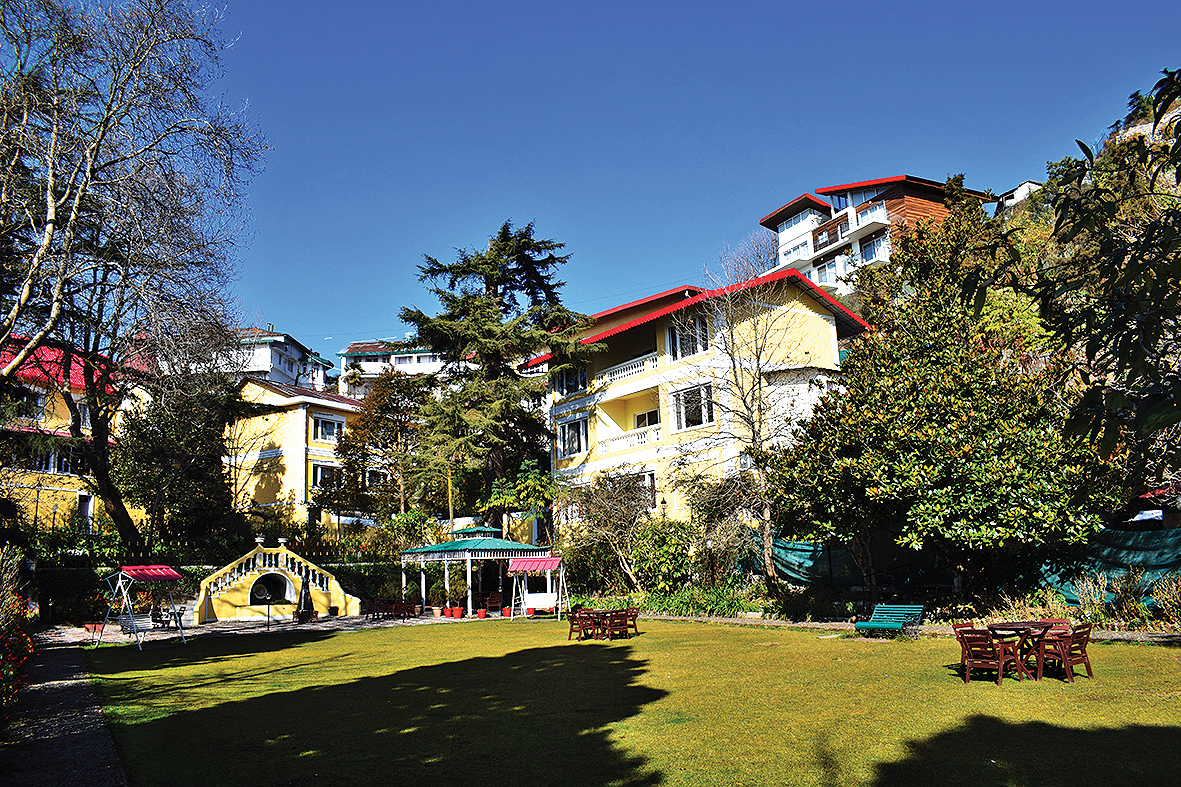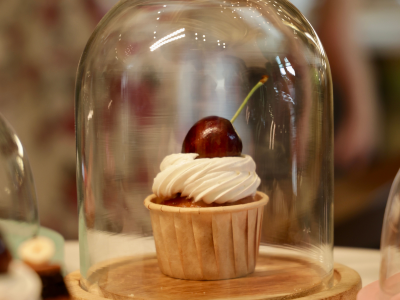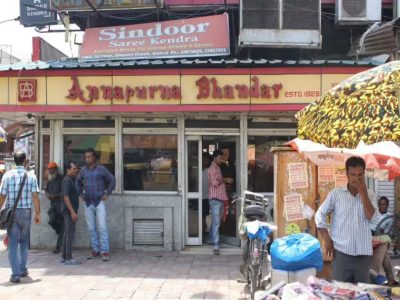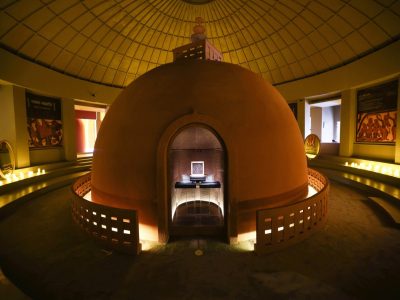When in Landour and Mussoorie, Breathe fresh air, walk without the disturbing sound of horns, hug trees, watch the sun & forget the world
An old gold hill station, Landour is where author Ruskin Bond lives. And that is reason enough to go here. There must be something in the pristine hills that helps the creative juices flow. Lady luck and the weather gods are kind to me. My hosts at WelcomHeritage Kasmanda Palace, Raja Dinraj Pratap Singh and his wife, arrange my drive through the beautiful hills. “Landour is part of the cantonment area, so the mountains are pristine, construction is minimum and the environment clean,” they say. My heart is skipping a beat because Landour has been on my bucket list for years. To get even a few golden hours amid the deodars, fresh mountain air and watch the sunrays flit over the mountains is a wish turned reality. The smile on my face says it all.
Heritage Stay
Kasmanda Palace is located on the Mall Road. The building traces its history to 1836 when it was known as Basset Hall Estate. It was built by Captain Renie Tailyour of Bengal Engineers and the famous Christ Church was also a part of the estate then. Now it’s under the aegis of the Agra Diocese. It has gone through many owners since then. Even the Woodstock School was a temporary occupant in 1855. It became a hospital during the Crimean War, then a school again and finally Raja Bahadur Suraj Baksh Singh became the owner in 1915.
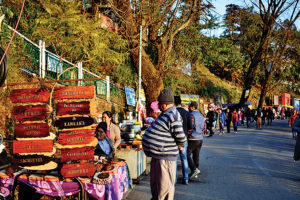
He ruled Kasmanda principality in District Sitapur, Uttar Pradesh. Basset Hall then became Kasmanda Palace. “It was our ancestral summer home,” says Raja Dinraj, “we converted it into a boutique hotel in 1992. There’s so much history here and this was a good way to preserve it.” A walk through the hotel is an experience in itself—right from the reception area to the rooms and the gardens. Each room is unique with a different ambience, the old world four poster beds in some make them quainter. The sink-in sofas, big windows add to the charm. And the view from the garden is breathtaking. The restaurant offers fresh, home-cooked food.
The décor is really charming. The trophies in the corridors are a little daunting but Mussoorie was born as a hunting ground for Lt. Frederick Young of East India Company. He built a hunter’s lodge, raised the first Gurkha Regiment and was the first one to plant potatoes here. The deer, bear, rhino, buffalo heads are just a reminder of the days gone by.
Landour, the princess
Thankfully, it is not raining. I would have been stuck inside the car otherwise. It’s approximately a two-hour long but easy trek to Landour. But I have a taxi and it goes through the curvy and 2km-long Mall road before reaching Lal Tibba (Lal is red and tibba is peak). This is a famous viewpoint from where you can watch the sun turn the peaks red and orange before darkness engulfs them. Luckily, I don’t find many tourists; traffic jams are pretty common on this road, I am told. There is a fee of Rs 50 to climb up the small café roof and watch the peaks through the big Japanese telescope going back to 1967. On a clear day, one can see Badrinath, Kedarnath, and other peaks. I enjoy a cup of hot, hand-beaten espresso coffee, a pleasure lost in the city. The fee is waived off if you order snacks and beverages from the café.
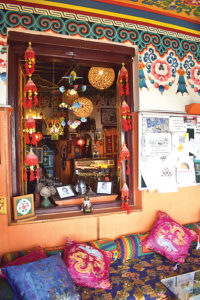
A stone plaque here tells me Landour is named after a small town in Wales called Llanddowror. Touted as the ‘fairer princess of the hills’ this little town was a convalescent depot for British troops suffering from malaria and other health issues in 1827. I ask my cabbie about the famous Sister’s Bazaar. “It’s just a bakery,” I listen in disbelief to this answer. The sisters working in the hospital lived on this little street which now has only a bake house and Prakash Store, which I believe sells the yummiest home-made chutneys and jams.
Other old buildings here are St Paul’s Church which was built in 1840 and an old post office. It’s very peaceful in the church, not a person in sight, I light a candle (be sure to put Rs 10 in the box there) and enjoy a few moments reading the carols. The little sun rays light up the stained glass paintings of Jesus Christ and Mother Mary. They create a rainbow with tiny particles bouncing back and forth. This is bliss—the people are warm, friendly and trusting. The churches in the area come alive on Sundays when service is held and all are invited.
Chaar Dukan is literally four cafes and the old post office on the first floor. There is a bank too here and a little ahead I see a soldier, which tells me that building is off limits. I enjoy a walk around, bathe in the sun and we are now looking for the Language School. We don’t find that but we do land at the boundary of the famous Woodstock School. It’s the resident area for the principal and we turn around to begin the drive back.
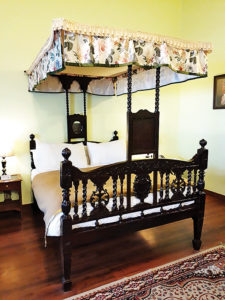
But the excitement isn’t over for now the cabbie comes to a halt on a curve. A white, plain, non-descript home is where the famous man—Ruskin Bond—lives and writes his novels. I step out, next to this white house is a colourful inn called Doma. It has even brighter interiors and serves Bhutanese food. No time, I look at my watch.
Back to the queen
We begin the drive back to the crowded Mall road. With shops and rows of vendors offering wooden nameplates, woollens caps, mufflers, gloves and little hand-made goodies, it’s quite a place for those who like the hustle and bustle during their holidays. There is a cinema hall too.
The queen of the hills can’t actually be called a queen now, for the garbage, the rampant construction and the crowd doesn’t make it look queenly anymore. Even then, I take a stroll to the old library, built in 1843. Only members are allowed here and there are only 70 active ones. The wooden almirahs and old hardbound leather books have such a lovely feel. The sun is streaming through the windows and there is not a soul reading here. I wish they would have allowed me to read a page or two from the old books sitting on those big, fat wooden lounging chairs. There is a collection of photographs of the hill town from the days of the Raj.
Satiated, I walk back to the hotel, past some little puppies. My hosts say they would have arranged a meeting with the great author had I expressed my wish, but then there’s always another time. And this time, it will be a weekend for the author also sits at a stationary shop in the mall to meet enthusiasts.
How to reach
There are flights and trains to Dehradun from Delhi. It takes about an hour’s drive to Mussoorie from there.
Best time to go
Year around

